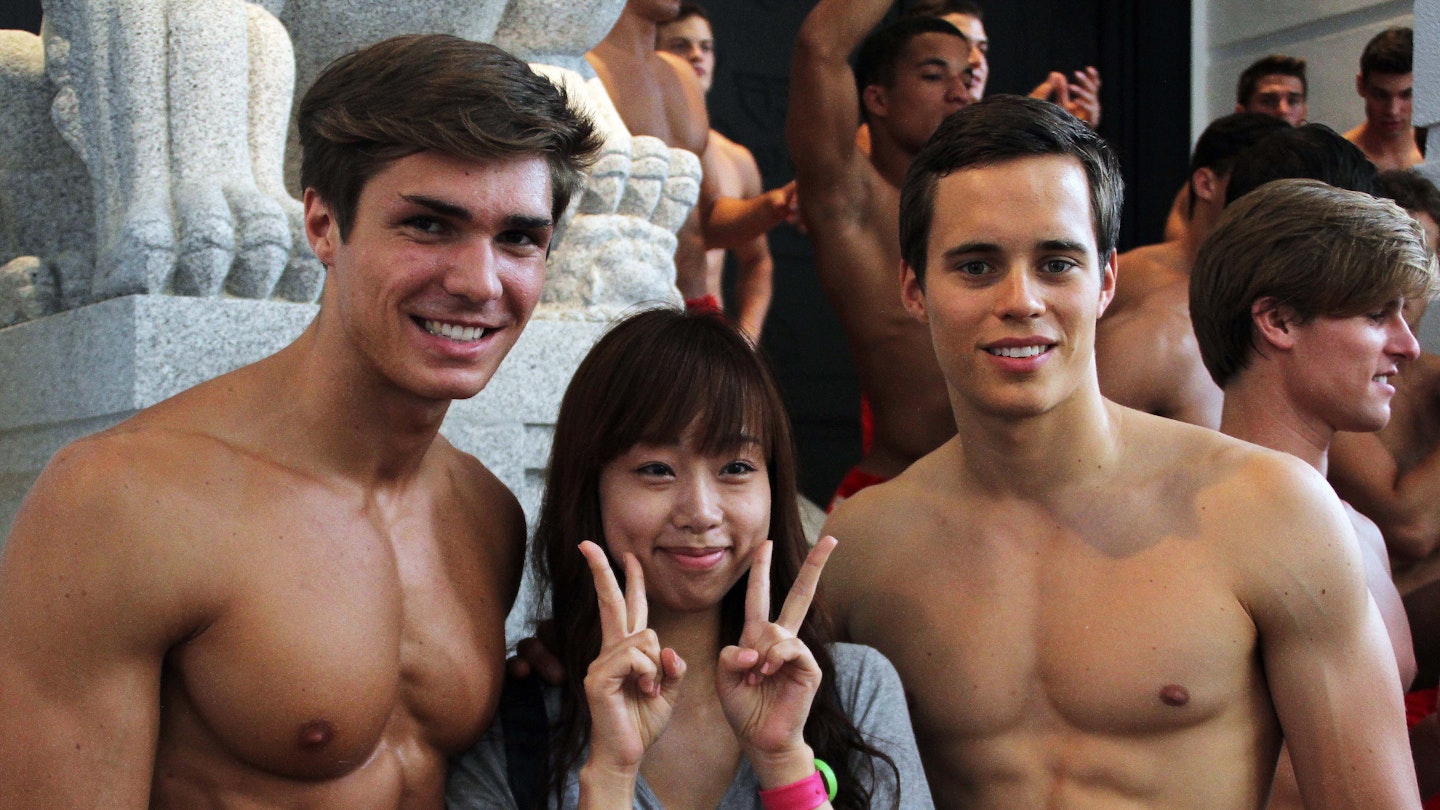'Hey guys, what’s up?’ was the cool and casual question we asked customers as they arrived at the store. We wore flip flops in winter, drowned ourselves in musky cologne and were referred to as ‘brand ambassadors’ with an air of superiority that aligned with the Abercrombie & Fitch empire.
I started working in Abercrombie’s sister store Hollister (same beast, different hat) in 2017 after I was ‘scouted’ while shopping with my boyfriend. We were preppy, athletic, and immediately both invited for an interview. They scanned our features across the dimly lit shop and decided our faces made us qualified.
Rather than questioning the looks-based recruitment process, I was almost embarrassingly flattered. All of the hot people I knew had always worked in A&F or Hollister and, despite the brand being past its early 2000s peak, I had officially made it into the club.
Exclusivity was the basis of the brand. In 2005, Latino, African-American and Asian-American ex-employees filed a $50 million sex and racism lawsuit, detailed in Netflix's new documentary White Hot, that started a swirl of controversy.
‘We go after the cool kids, ' said CEO Mike Jeffries, in 2006. ‘We go after the attractive all-American kid with a great attitude and a lot of friends. A lot of people don’t belong [in our clothes] and they can’t belong. Are we exclusionary? Absolutely.’
Like a nightclub that turns away more than half of its guest list, the more stories of exclusion that emerged, the more those elite enough to be included felt significant and special for being one atom of the thin, symmetrical, tiny-pored team that made up the A&F army.
‘Are you excited?’ the store manager asked with sugary enthusiasm when he called to tell me I’d made it through the intimidating group interview. ‘Can you start tomorrow?’
After four hours, my eyes were achy from the nonsensical store lighting. I’d spent 240 minutes essentially folding the same pile of jumpers near the entrance to keep my hands busy while greeting customers (‘Hey guys, what’s up?’ – remember?).
I was a prop. A door girl that both welcomed people and reminded them this is what you were meant to look like to wear our clothes. It was as boring as other retail work I’d done but, when I clocked out at the till using the Abercrombie & Fitch emblazoned employee card, it still felt like the golden ticket to a member’s club.
So, I stayed. Four years. The zero-hour contract suited me to bounce from my degree to my gap year, to my postgraduate studies while keeping casual shifts available. Once in London, I was employed at the (now closed) flagship Abercrombie store on Burlington Gardens – a mammoth grade II building with endless rooms and multiple floors.
In 2009, a law student Riam Dean had (unsuccessfully) sued A&F with claims that she’d been banished to the stockroom because her amputated arm meant she didn’t conform with the brand’s model-ready staff policy—but they positioned people in the stockroom for much less.
While my university and hometown stores had been staffed by a selection of good-looking people from the local area, the flagship store was dominated by actors and models whose heads constantly whipped around the floor with hopes of being scouted by a showbiz somebody in the nearby vicinity.
The division between the storefront and stockroom staff was palpable: the nearly famous and the normal people. I am no model and so, of course, was quickly placed back of house.
After watching Netflix’s documentary about the ‘rise and fall of Abercrombie and Fitch’ which details endless instances of homophobia, weight discrimination and racism within the brand, everyone seems to be asking the same question: ‘has it actually changed?’ My answer is no, but it’s getting there.
When Fran Horowitz took over as CEO in 2017, the year I started to work there, there were still practices at both Hollister and Abercrombie (looks-based recruitment, selective staff positioning, affairs amongst the staff) that both preserved and exemplified the problematic practices of the company.
That being said, as the years went on, I started to notice greater inclusivity in both brands’ advertising campaigns. However, it still made me uncomfortable and sad to have to tell certain women we simply didn’t stock their size in store. ‘Your clothes only fit children,’ was usually their response.
Now, Abercrombie stocks up to XL and tells customers on its website that their goal is to ‘create a space where everyone feels confident and comfortable in their own skin’. While working there, I certainly didn’t feel comfortable in mine. But after decades of discrimination and fundamental and infectious shallowness, I hope the future of the brand is as welcoming as it claims to be.
READ MORE: White Hot: The New Abercrombie And Fitch Documentary Is Making Everyone Feel Really Old
Here's Another Elitist Tale From An Ex-Abercrombie & Fitch Employee
